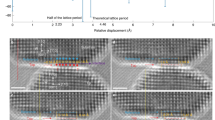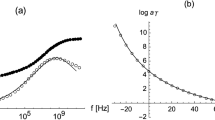Abstract
IT is now well established that the development of high friction and ultimately of seizure between rubbing metal surfaces is greatly facilitated by progressive cleaning, particularly in the final stages when the last remaining contaminant films of atomic dimensions are removed. We have recently carried out further experiments on the lines of those of Bowden and Hughes1, originally with the object of determining the temperature coefficient of friction over a wide temperature range, and have found that with clean surfaces complete seizure occurs.
This is a preview of subscription content, access via your institution
Access options
Subscribe to this journal
Receive 51 print issues and online access
$199.00 per year
only $3.90 per issue
Buy this article
- Purchase on Springer Link
- Instant access to full article PDF
Prices may be subject to local taxes which are calculated during checkout
Similar content being viewed by others
References
Bowden and Hughes, Proc. Roy. Soc., A, 172, 263 (1939).
Author information
Authors and Affiliations
Rights and permissions
About this article
Cite this article
BOWDEN, F., YOUNG, J. Friction and Adhesion of Clean Metals. Nature 164, 1089–1090 (1949). https://doi.org/10.1038/1641089b0
Issue Date:
DOI: https://doi.org/10.1038/1641089b0
Comments
By submitting a comment you agree to abide by our Terms and Community Guidelines. If you find something abusive or that does not comply with our terms or guidelines please flag it as inappropriate.



